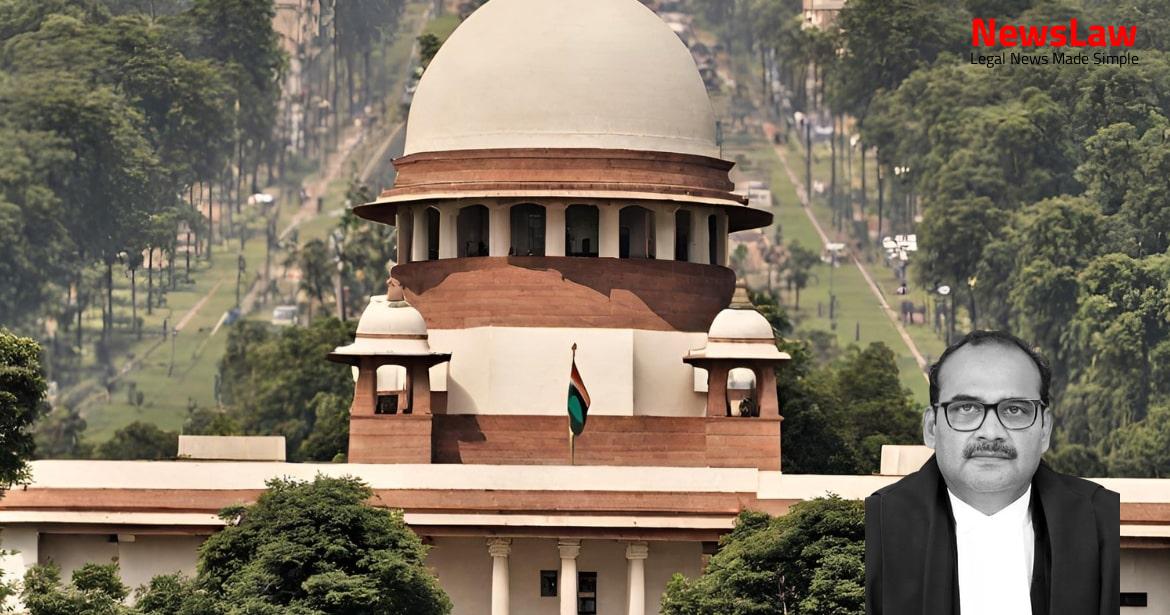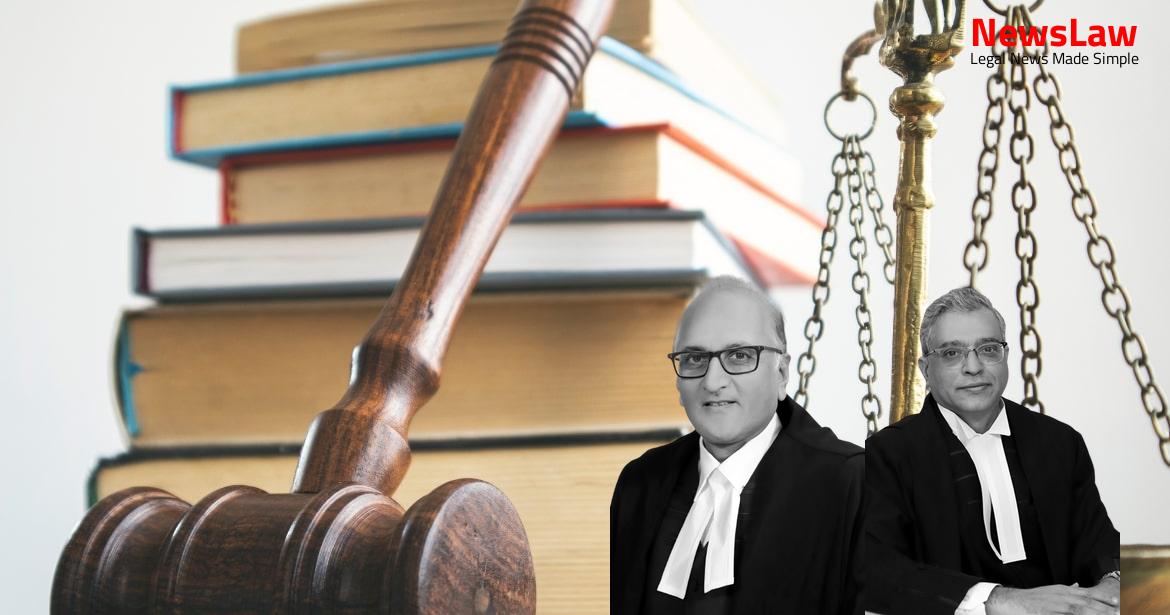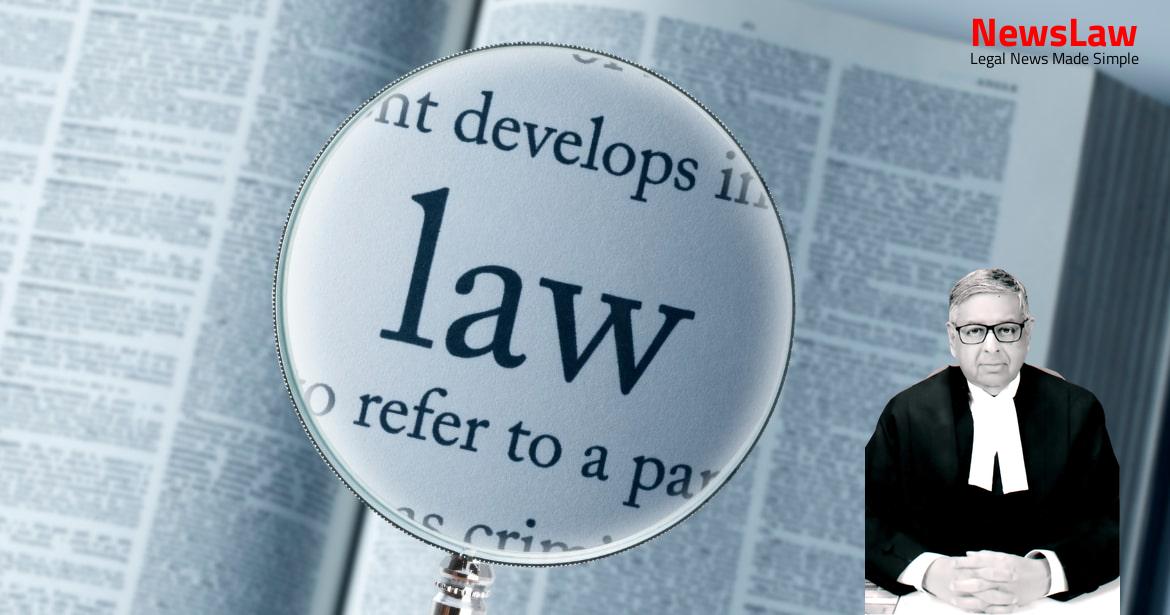In a recent legal case, the court’s analysis of forensic evidence played a pivotal role in determining the verdict. The scrutiny of expert opinions and the handling of critical evidence are key aspects discussed in the judgment. Stay tuned to uncover the nuances of the legal proceedings and the significance of forensic examination in this murder case.
Facts
- Sandeep was alleged to have fallen down, prompting the complainant and his son to rush towards the spot.
- The post mortem report revealed 13 injuries on the deceased.
- The appellants Rajesh alias Sarkari and Ajay Hooda were convicted under Section 302 read with Section 34 of the IPC and sentenced to life imprisonment.
- They claimed innocence and stated that they were falsely implicated.
- Various exhibits were recovered, including a liquor bottle with some quantity of liquor.
- Witnesses involved in the case include PW9, PW10, PW14, PW19, and others.
- Several forensic reports from the laboratory were presented as evidence.
- The police recorded statements and conducted investigations based on the evidence and witness testimonies.
- Different parcels containing fired bullets, cartridges, and other evidence were examined in the laboratory.
- Witness testimonies regarding the sequence of events and actions taken post the incident were presented.
- The defense witnesses provided their testimonies, stating their versions of the events.
- Issues related to the authenticity of eyewitness accounts, forensic reports, and witness testimonies were raised during the trial.
- The recovery of firearms and other incriminating evidence played a crucial role in the case.
- The Sessions Court found truth in the prosecution’s case against the appellants for the murder of Sandeep.
- The appellants and co-accused Pehlad were convicted under Section 302 read with Section 34 of the IPC.
- They were sentenced to life imprisonment.
- Accused Pehlad was later charged in a supplementary charge-sheet and committed to the Court of Sessions Judge.
- The two appellants were tried in the Sessions Judge court for the offense under Section 302.
- The High Court, in a judgment dated 17 January 2019, dismissed the appeals filed by the accused.
Also Read: Electoral Malpractices in Mayor Election
Arguments
- PW4 and PW5 could not have transported the deceased on a motorcycle to the hospital.
- DW4- Parveen took the deceased to the hospital in the deceased’s car.
- Corroboration of PW4 and PW5’s presence at the scene is confirmed by PW5 handing over the deceased’s track suit to the police.
- The track suit of the deceased was examined in the third FSL report.
- The deceased sustained 13 injuries from the firearm attack according to the Sessions Court.
- Opposition to the appellants’ submissions by Mr. Deepak Thukral representing Haryana.
- Appellants submit that the weapon seized in earlier investigation was not made available to the examiner in the present case.
- Refutation attempted by pointing out a test firing of weapon W/2 that did take place.
- Authors of FSL reports related to seizures in FIR No 311 and FIR No.781 were not examined by the prosecution.
- Discrepancies pointed out by the Senior Counsel regarding descriptions and test firings in the reports.
- Explanation given for prosecution’s failure to examine ballistics examiners in evidence.
- Reference made to the legal position in Mohinder Singh vs State and Gurucharan Singh vs State of Punjab cases.
Also Read: Balancing Power and Transparency: Electoral Bonds Struck Down, Disclosure Mandated
Analysis
- The examination of a ballistics expert would have explained the discrepancies in the FSL reports.
- The identification of the accused in a TIP is not always necessary, depending on the quality and assurance of other evidence.
- The failure to examine the ballistics examiner casts doubt on the prosecution’s case regarding weapon analysis.
- Presence of DW4 and DW5 at the scene points towards their involvement instead of PW4 and PW5.
- The FSL reports contain errors and lack clarity, which affects the prosecution’s story.
- The court should assess the refusal to undergo a TIP in light of the doubts surrounding eye-witness accounts.
- The prosecution failed to establish the correctness of the FSL report, impacting the case against the appellants.
- In Jugraj Singh vs State of Punjab, omission to send a recovered pistol to the ballistics expert was considered significant.
- In Gurucharan Singh, the court emphasized that the prosecution’s success in proving a murder charge with a lethal weapon does not solely depend on the examination of an expert.
- The failure to produce expert opinion was held to have affected the creditworthiness of the prosecution case in Sukhwant Singh vs State of Punjab.
- In Govindaraju vs State, adverse inference was drawn due to the non-examination of a person from the FSL.
- Expert examination may not be essential if direct evidence is consistent and of unimpeachable character, as observed in Vineet Kumar Chauhan vs State of UP.
- Ballistics evidence connecting cartridges and bullets with alleged weapon of offence is contradictory and flawed
- Refusal to undergo a TIP is of secondary importance without substantive evidence
- Prosecution failed to establish case beyond reasonable doubt
- Appellants acquitted due to benefit of doubt
Also Read: Recall of Resolution Plan Approval: Legal Analysis
Decision
- Pending applications will be disposed of
- Appellants have served over 12 years of imprisonment
- Appellants to be released and their bail bonds cancelled, unless wanted in connection with another case
- The appeal is allowed with the above terms
Case Title: RAJESH @ SARKARI Vs. THE STATE OF HARYANA (2020 INSC 628)
Case Number: Crl.A. No.-001648-001648 / 2019



